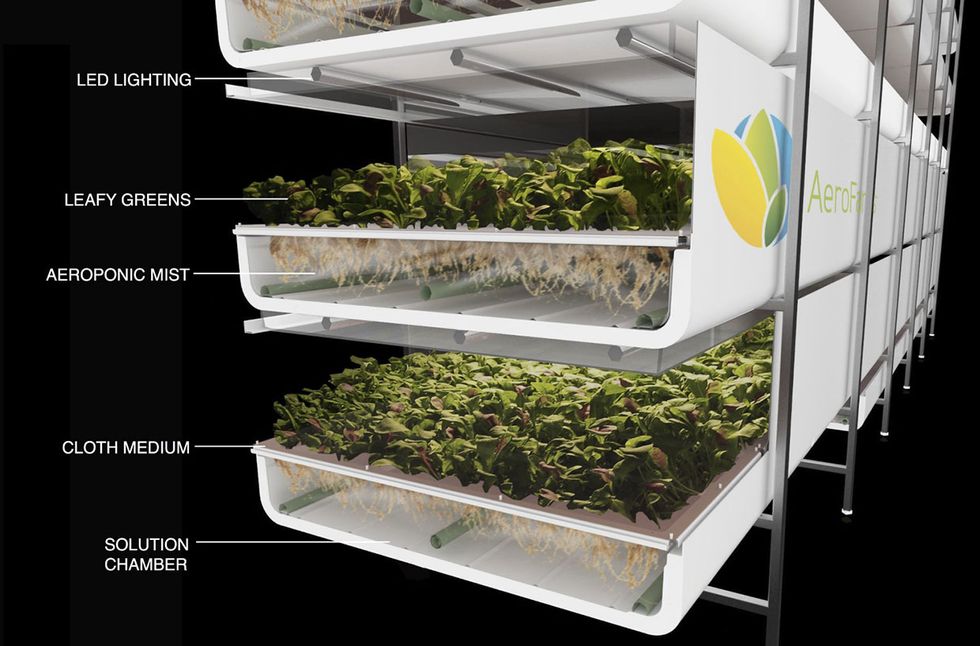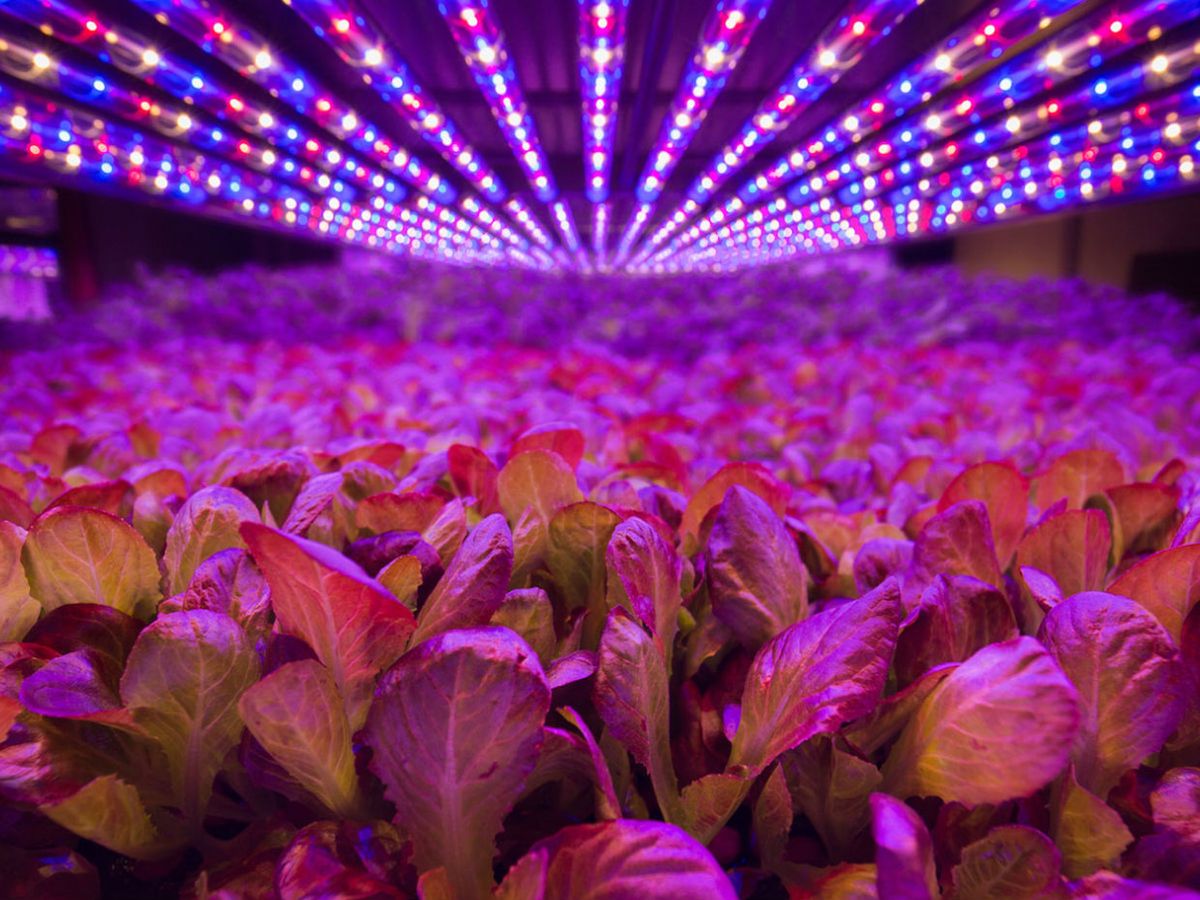THE INSTITUTEFarmers face many challenges when it comes to growing crops, whether it be maintaining fertile land, having the right amount of water and sunlight, or coping with drought or frost. Such hurdles could be avoided, however, by moving the farms indoors.
That’s the idea behind AeroFarms of Newark, N.J., which opened its ninth indoor facility this month in a 6,400-square-meter warehouse. The new facility is now the largest indoor farm in the world, based on how much it can grow. It’s capable of harvesting nearly 1 million kilograms per year of leafy greens and herbs.
AeroFarms crops bask under an array of LED lamps instead of sunlight, and sensors monitor temperature, humidity, oxygen levels, and more to ensure the plants are growing in optimal conditions. Not only do the crops require no soil or pesticides, but the farms also use about 95 percent less water than traditional operations, says Marc Oshima, who helped found the company.
AeroFarms plans to open facilities on four continents in the next five years. However, it’s one of several popping up around the globe. In Miyagi Prefecture, Japan, for example, the indoor farm Mirai was created in response to a food shortage after the 2011 Tōhoku earthquake and tsunami. Mirai now produces 10,000 heads of lettuce per day.
“This is a new way of farming. We’re marrying horticulture, engineering, and data science,” Oshima says. “It’s farming where we take the volatility of Mother Nature, and the challenges of growing outdoors, and we stabilize it.”
Out in a field it could take 45 days to harvest leafy greens; indoors, with optimization techniques, the same greens can grow in as little as 12 days. And because indoor farming can continue year-round, it can be up to 75 times as productive as traditional methods.
OPTIMIZING THE FARM
The Institute visited AeroFarms in March, where a team of 10 engineers working with plant scientists is developing the company’s proprietary system. The team includes electrical, mechanical, and lighting engineers as well as a specialist in programmable logic control.
“Our horticulture meetings look more like statistics meetings,” Oshima says. “We’re analyzing all the possible variables in terms of how to optimize the plants for taste, texture, color, nutrition, and yield.” The farm specializes in short-stem leafy greens including arugula, kale, and spinach, plus herbs, which don’t take up much space, helping AeroFarms maximize production. AeroFarms has about 1 acre of space for growing plants.
Variables considered include the amount of light and in what color spectrum. Those decisions depend on the plant and the desired end result. If the team would like the watercress to be crisper and have bolder flavor, for example, it would determine the wavelengths necessary to achieve those results and when to turn the LEDs on and off.
“In this environment, we can have more effective photosynthesis than outdoors,” Oshima says. “Turns out the sun is quite inefficient for farming; it can produce too much heat or too much infrared light—which can be damaging.”
The LED lamps are optimized to repel insects, too, by eliminating green and infrared lighting, which help insects in nature navigate and mate. Without insects, there is no need for pesticides.
To maximize space, the plants are grown on trays stacked 12 levels up, reaching 9 meters high. “We’re going right to the ceiling,” Oshima says.
Each tray is equipped with sensors that measure temperature, CO2, and nutrients including nitrogen, phosphorus, and potassium. The scientists, who have 30,000 data points to work from for each harvest, decide how to improve the crops based on the information gathered. They might tweak the humidity, for example, or provide more or less water or light.
A BETTER HARVEST
Non-genetically modified seeds are planted in lightweight cloth instead of soil and are placed in the trays directly below LED lamps. The cloth, which is made from recycled plastic bottles, holds the roots in place as the plants bloom.
AeroFarms uses aeroponics, misting the plants with nutrient-enhanced water.

Because of the optimal conditions indoors, the engineers can turn their attention to flavor and texture. “We look at culinary trends and think about flavor profiles,” Oshima says. “By changing up the variables, we can make the arugula taste like it’s been sprinkled with black pepper. We have a mustard green that is sharp, like wasabi.” To date, they’ve come up with more than 250 variations of nutrient-rich greens.
As indoor farms continue to expand, technology inevitably will play a growing role in food production, making engineers critical to the future of sustainable farming.
